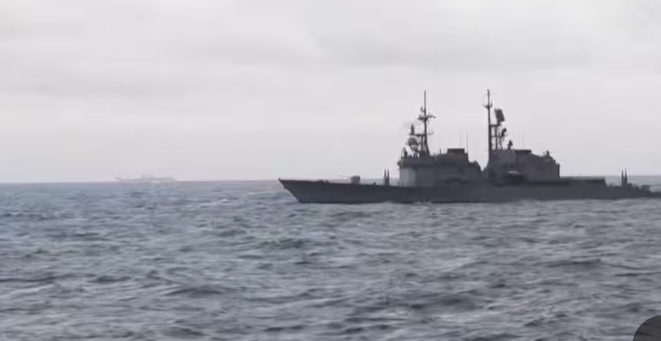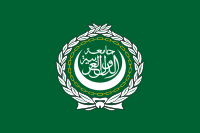China is conducting military drills around Taiwan, accusing its leaders of separatism. Taiwan has responded militarily, while China uses propaganda to pressure the island and deter U.S. support.
China Launches Military Drills Around Taiwan, Escalating Tensions


China has initiated large-scale military exercises surrounding Taiwan, accusing its leaders of being "separatists" and "parasites" who are pushing the island, which operates as a democracy, into conflict. The drills, accompanied by a significant propaganda campaign, commenced unexpectedly on Tuesday morning. The People's Liberation Army (PLA) of China described the exercises as a "stern warning" to Taiwan's government, which Beijing views as engaging in separatist actions.
Forces from the PLA Navy, Army, and Rocket Force are reportedly approaching Taiwan from “multiple directions,” according to the Chinese Eastern Theatre Command, which oversees military operations in the region. The Command detailed that the drills would focus on “combat readiness patrols at sea and in the air, seizing comprehensive control, striking maritime and land targets, and imposing blockade controls on key areas and routes.”
Additionally, China’s Coast Guard was involved in the operations, conducting what they referred to as “law-enforcement patrols” near Taiwan’s main island. The integration of non-military arms like the Coast Guard, alongside the maritime militia fleet of fishing boats and the use of civilian ships for military purposes, marks a key strategy in China's military advancement. Zhu Anqing, a spokesperson for China’s Coast Guard, emphasized that these drills represented concrete actions to enforce jurisdiction over the island in line with the one-China principle.
Taiwan’s defense ministry confirmed the detection of 19 PLA ships around the island by 6 a.m. on Tuesday, including the Chinese aircraft carrier Shandong. Over 10 of these ships came within proximity of Taiwan’s contiguous zone, which extends 24 nautical miles (44 km) from the coast. In response, Taiwan deployed aircraft, Navy ships, and coastal missile systems, the ministry reported.
Beijing claims Taiwan as part of Chinese territory and is continuing to develop military capabilities with the goal of potentially seizing the island by force. While analysts suggest that China is not yet ready for an all-out invasion, it has made significant advancements and employs military pressure, such as these drills, and other coercive tactics to coerce Taiwan into submission. A statement from Zhu Fenglian, a spokesperson for Beijing’s Taiwan Affairs Office, declared, “’Taiwan independence’ means war, and pursuing ‘Taiwan independence’ means pushing the people of Taiwan into a dangerous situation of war.”
Taiwan, which is recognized by a handful of countries, including those in the Pacific and Caribbean, functions as a sovereign state with its own government, military, and currency. The island’s government and population remain steadfastly opposed to the prospect of Chinese rule.
Wen Lii, a spokesperson for Taiwan’s presidential office, condemned China's “escalatory behavior” and “military provocations.” He linked the recent military actions to similar drills near Australia, New Zealand, Japan, Korea, the Philippines, and the South China Sea. "China’s wide-ranging drills indicate that its ambitions are not limited to annexing Taiwan but rather aim to achieve hegemony in the western Pacific," he stated.
In addition to the military exercises, China has ramped up propaganda on social media with nationalistic videos and posters. One such video depicted a full-scale assault on Taiwan, including missile attacks, while another targeted Taiwan’s president, Lai Ching-te, calling him a “parasite courting ultimate destruction.” The imagery included a cartoon representation of Lai as a bug held by chopsticks over a burning Taipei, further emphasizing Beijing's hostile stance.
China has conducted multiple drills against Taiwan in recent years, typically in response to acts perceived as separatist or pro-independence. Lai, who was elected president last year to continue the pro-sovereignty Democratic Progressive Party's rule, has adopted a firm approach to cross-strait tensions. Last month, he labeled China as a “foreign hostile force” under national security laws, announcing measures to combat its growing influence and espionage operations. These actions were specifically highlighted in China’s latest propaganda campaign.
Tuesday’s drills were notable for their lack of prior warning, which contrasts with earlier exercises. Taiwan’s military and government have been intensifying their response training in light of concerns that China might launch a genuine attack or blockade under the guise of a drill. The scale of these exercises seemed similar to China’s “Joint Sword” drills conducted in 2023 and 2024, though this latest round was unmarked, which a Chinese military analyst interpreted as an indication of such drills being increasingly normalized.
Amanda Hsiao, a director in Eurasia Group’s China practice, noted that the latest propaganda signals a shift in China’s strategy. “This is primarily about Lai’s 13 March speech, which Beijing found provocative,” she explained. “The publicity around the exercise likely also has the US in mind – they want to persuade the Trump administration that Lai is a troublemaker and deter the US from maintaining strong support for Taiwan.”
Meanwhile, US Secretary of Defense Pete Hegseth has been visiting several Asian countries in recent days, underscoring the importance of countering China and deterring any military action against Taiwan, which remains a top priority for the United States.

 বাংলা
বাংলা  Spanish
Spanish  Arabic
Arabic  French
French  Chinese
Chinese 
